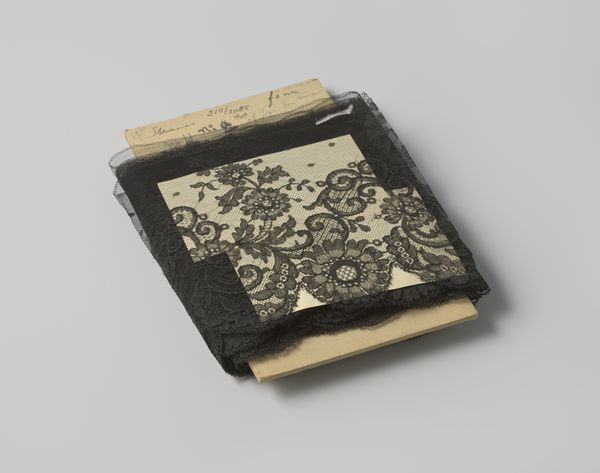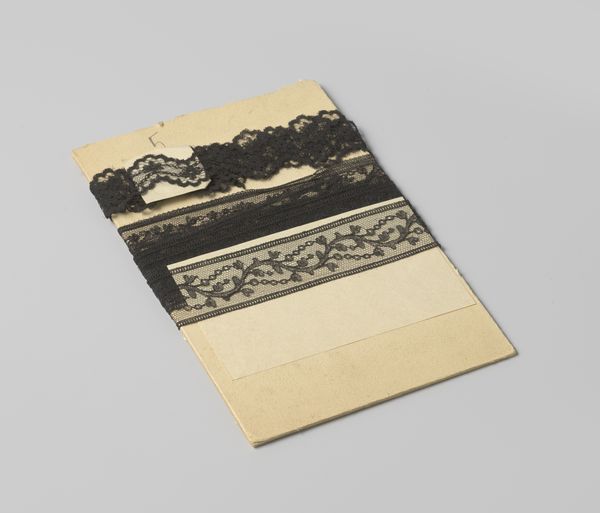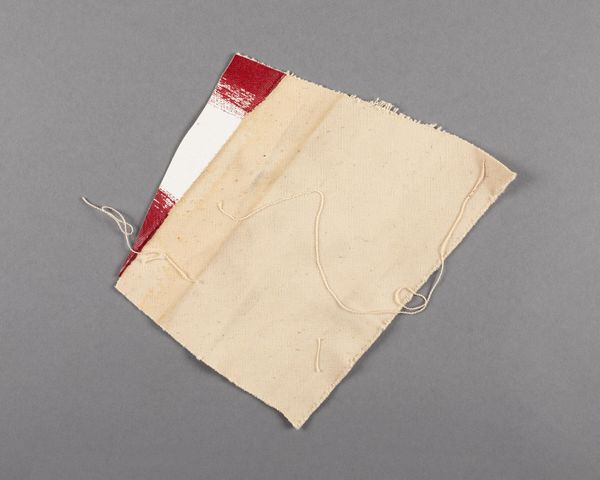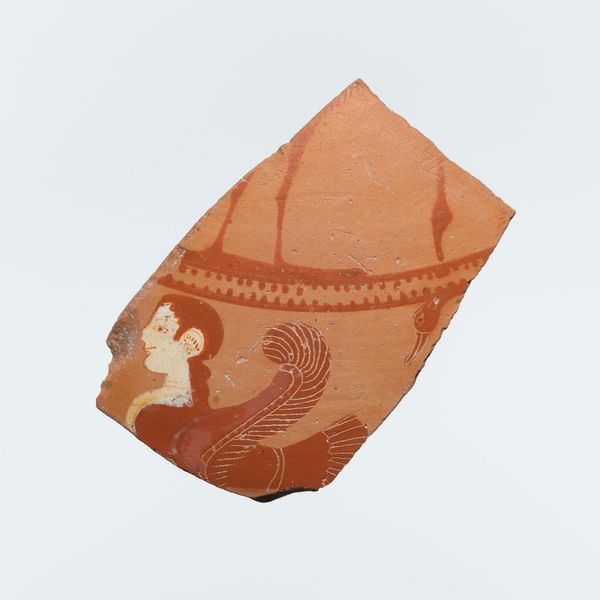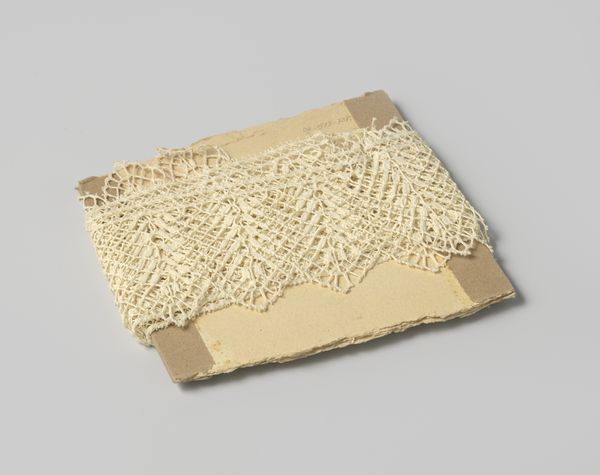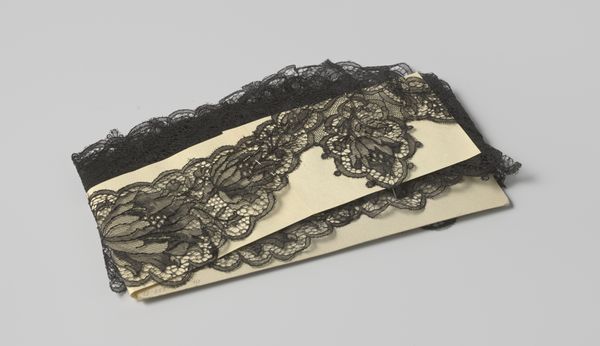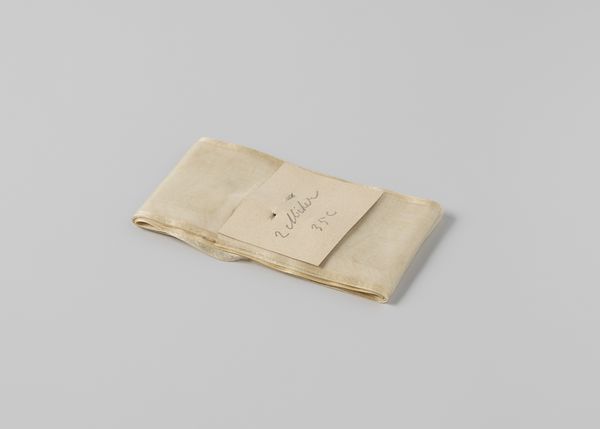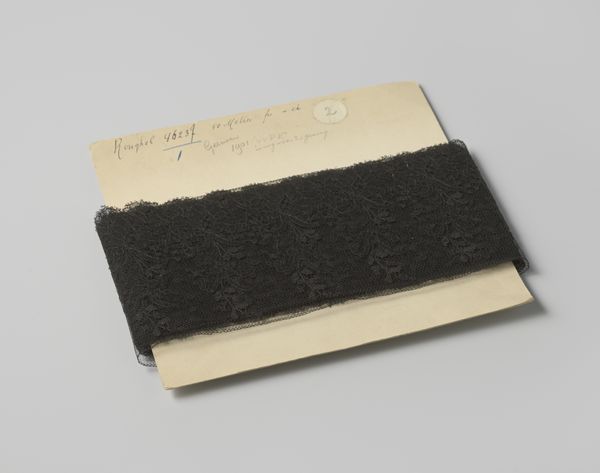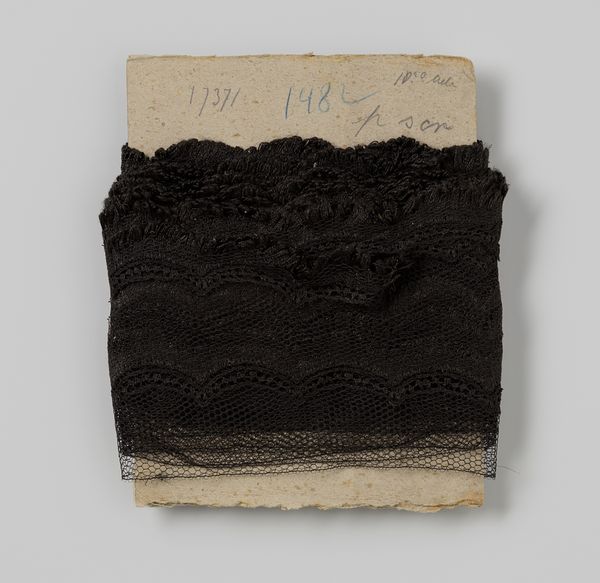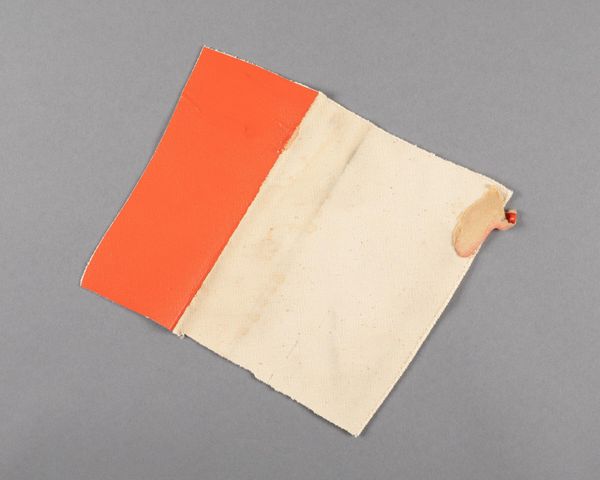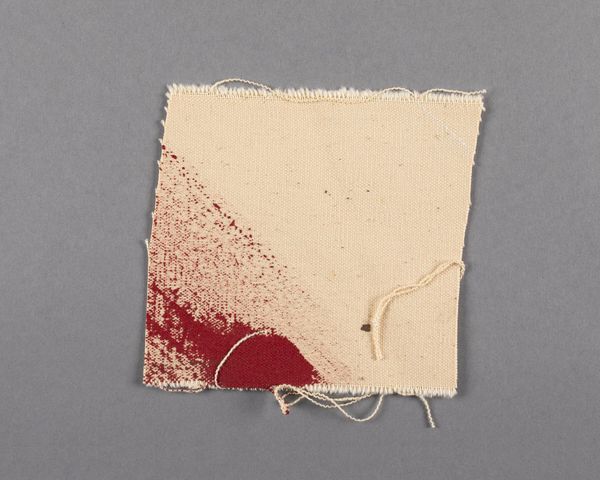
Strook tweezijdig geschulpte zwarte kant met motief van bladeren, c-vormige voluten en wielen, op zachtboard c. 1925
0:00
0:00
fibre-art, textile
#
fibre-art
#
textile
Dimensions: width 10 cm, length 20.5 cm, width 17 cm
Copyright: Rijks Museum: Open Domain
Curator: We're looking at "Strook tweezijdig geschulpte zwarte kant met motief van bladeren, c-vormige voluten en wielen, op zachtboard" - quite a mouthful, isn’t it? It roughly translates to "Strip of double-sided scalloped black lace with a motif of leaves, c-shaped volutes and wheels, on soft board". Created around 1925, and attributed to Gustav Schnitzler. It is textile mounted over a softboard, with the photo captured, preserving the scene. What springs to mind? Editor: Dark elegance. Almost melancholic, in a way. The lace against the cardboard feels very delicate, fragile. The black is striking. There is something poetic, yet somber about it. Like a faded memory pressed between pages of a book. Curator: Exactly. Think about lace making. Such a painstaking process; delicate yet repetitive, mechanical. This echoes the spirit of the time; that era bridging handcrafted artistry with burgeoning industrialization. You get a whiff of ‘Pattern and Decoration’ that favored accessible beauty, while acknowledging industry that time and technology were ushering in. Editor: The juxtaposition is so key here. This piece highlights opposing forces--soft lace against the rigidity of the cardboard; handmade intricacy fighting manufactured goods; perhaps mourning the end of the gilded era, and the rise of a brave new world. This arrangement has strong ties to Surrealist still life practices. Curator: Interesting observation. It goes beyond pure documentation. I almost sense Schnitzler finding beauty in ephemerality. That lace, meticulously designed and made, is ultimately destined to wear and decay, but captured, we may always admire it. Editor: Almost a romantic take on entropy. The photograph preserves the transient nature of beauty. And that, in itself, speaks volumes. It is thought-provoking; it is beauty juxtaposed with decay; its raw honesty that makes this such a quietly arresting piece. Curator: I find myself wanting to see the full textile, and what it may have once adorned, versus its fate sitting static, in a new way. It nudges at lost stories and beauty repurposed. Editor: It’s a memento mori in monochrome. Something to think about.
Comments
No comments
Be the first to comment and join the conversation on the ultimate creative platform.


